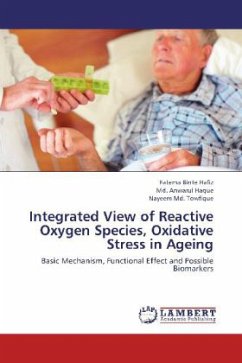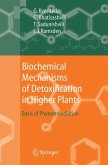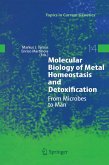The accumulation of lipid peroxide-derived aldehydes and ketones generated by the oxidation of polyunsaturated fatty acids of membrane lipids by reactive oxygen species (ROS) can significantly damage plant cells. In this study, an enzyme family possibly involved in the detoxification of these reactive carbonyls in plants was investigated. The members of this small enzyme family are flavin-dependent oxidoreductases and are related to Yeast Old Yellow enzyme. In A. thaliana they are represented by six members designated as 12-oxophytodienoate reductases (OPRs). This name is derived from OPR3 which catalyzes the reduction of oxophytodienoic acid, a key step in the jasmonic acid biosynthetic pathway. However, little is known about the physiological significance of the remaining OPR isoenzymes. The characterization of A. thaliana loss-of-function mutants for AtOPR1, 2 and 4 indicates a role for OPR isozymes in the alleviation of (photo)oxidative stress by detoxification of lipid peroxidation products. The single lossof-function mutants of AtOPR5 and AtOPR6, on the other hand, show no phenotype, most likely because the two genes are identical in the promoter and coding regions and yield identical transcripts. In order to explore AtOPR5/6 gene function in plant stress responses and to overcome their functional redundancy, RNA interference was employed to silence both genes. AtOPR5/6 RNAi-silenced plants exhibited high sensitivity toward (photo)oxidative stress, resulting in a decrease in the efficiency of photosystem II photochemistry and photoinhibition. The increased high-light sensitivity in AtOPR5/6 RNAi-silenced plants is reminiscent of plants impaired in the detoxification of reactive carbonyls suggesting that OPR5/6 may serve a similar function in vivo. Such a role is further supported by the increased susceptibility to the electrophilic lipid derivative methyl vinyl ketone (MVK). MVK-induced cell death events were significantly higher in opr1 and opr2 mutants and AtOPR5/6 RNAi-silenced plants as compared to MVK-treated wild type. In order to study the detoxification process in more detail, AtOPR5/6 had to be purified in sufficient quantities. Conditions of AtOPR5/6 expression and purification were optimized, since the enzyme tended to aggregate and accumulate in insoluble form as inclusion bodies. Denaturation and refolding turned out to be the most effective way to generate considerable amounts of stable and soluble OPR5/6. However, no activity was detected for AtOPR5/6, possibly because of a unique substrate specificity, or else, because of an inactive conformation of the protein. Similar high-light sensitive phenotypes of the opr1, 2, and 4 single mutants and AtOPR5/6 RNAi-silenced plants indicated that the genes act non-redundantly in stress acclimation. Previous findings showed different tissue-specific expression patterns of AtOPR1, 2 and 4, which may account for apparently non-redundant function of the AtOPRs. Here, the expression analysis was extended to the AtOPR5 promoter. Transgenic plants expressing the ¿-glucuronidase (GUS) reporter gene driven by the AtOPR5/6 gene promoter were analyzed. AtOPR5/6 promoter activity differed from that of other AtOPRs, being high in hypocotyls and in the fully expanded rosette leaves but not in etiolated dark grown seedlings, reproductive organs and roots. Furthermore, sub-cellular localization experiments revealed that AtOPR5/6 is targeted to the Golgi apparatus. These finding suggest that the different OPRs play complementary roles in the detoxification process to control the cellular homeostasis of stress metabolites in different plant tissues and in different subcellular compartments.
Bitte wählen Sie Ihr Anliegen aus.
Rechnungen
Retourenschein anfordern
Bestellstatus
Storno








